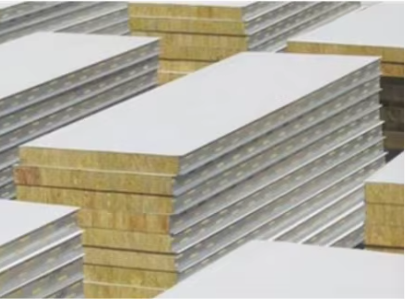Cost Comparison: Sandwich Panels vs Traditional Building Materials
Initial Material Costs and Long-Term Savings
When evaluating the initial material costs of sandwich panels and traditional building materials like brick or concrete, sandwich panels often represent a more affordable choice. Sandwich panels, comprising layers of materials such as insulation sandwiched between two outer metal sheets, typically require fewer raw materials, therefore reducing upfront expenditures compared to building with bricks, which might necessitate significant quantities of mortar and skilled labor. Additionally, the energy efficiency inherent to sandwich panels results in substantial long-term savings. Their structure offers excellent thermal performance, reducing heating and cooling costs over the lifespan of a building—a factor substantiated by studies demonstrating that buildings with sandwich panels can cut energy expenses by up to 20% over traditional structures. Furthermore, labor costs are minimized due to shorter construction timelines afforded by the ease of sandwich panel installation. These aspects collectively establish sandwich panels as a cost-effective solution for sustainable building over a structure’s lifecycle.
Hidden Expenses in Traditional Construction Methods
Traditional construction methods often harbor hidden expenses that can inflate overall project budgets beyond initial estimates. These costs arise from various factors inherent in traditional materials, including prolonged construction timelines caused by weather delays, as brick and concrete work is susceptible to rain or extreme temperatures. Real-world case studies show how such delays can lead to increased labor costs and a strain on project resources. Furthermore, worker inefficiencies due to the specialized skills required for traditional materials further contribute to expense escalation. Housing insurance premiums tend to be higher for traditional buildings due to potential risks associated with fire or structural issues, not to mention contingencies set aside for unexpected expenses like material damages and repairs. These exemplify how traditional material choices not only involve upfront costs but can also incur unforeseen costs, making sandwich panels a more predictable and economically viable alternative. By understanding these hidden financial pressures, builders and architects can better plan and mitigate future construction costs.
Installation Efficiency: Time and Labor Considerations
Prefabrication Advantages of Sandwich Panels
The prefabrication process of sandwich panels offers significant advantages in reducing on-site labor. These panels are manufactured off-site, allowing for precise construction and quality control. Once delivered, they can be swiftly assembled, resulting in shorter project timelines. For instance, installing 600 square meters of sandwich panels requires approximately 8 hours with a proficient construction crew. Statistics demonstrate that a similar project using traditional masonry could take months to complete. This time efficiency in construction not only accelerates project completion but also minimizes labor costs, making sandwich panels an attractive option for time-sensitive projects.
Complexity of On-Site Traditional Material Assembly
In contrast, the assembly of traditional building materials can be complicated and labor-intensive. Projects often grapple with logistical challenges like coordinating the delivery of bulky materials, ensuring adequate on-site storage, and managing weather delays, which can impede construction progress. The labor intensity required for assembly, including bricklaying or concrete pouring, also demands specialized skills and a larger workforce. Construction managers often report issues with coordinating these logistics, stressing the added challenges and inefficiencies associated with traditional building methods. This complexity not only lengthens timelines but increases costs, highlighting the efficiencies gained by opting for sandwich panel solutions.
Energy Efficiency Impact on Operational Costs
Thermal Performance of Insulated Core Systems
The thermal efficiency of sandwich panels significantly surpasses that of traditional building materials. This is largely due to the lower thermal conductivity of the materials used in sandwich panels, such as polyurethane foam, which boasts thermal conductivity values as low as 0.022 W/mK. This high level of insulation helps maintain more consistent indoor temperatures, reducing both heat loss in the colder months and heat gain during the warmer months. Data from energy efficiency organizations highlight that sandwich panels can reduce energy consumption for heating and cooling by up to 50%, which can result in notable savings on energy bills over time. A study published in an energy efficiency journal similarly confirms these findings, indicating substantial energy savings and improved thermal performance with insulated core systems over traditional materials.
HVAC System Requirements Comparison
Structures constructed with sandwich panels often require less robust HVAC systems compared to those built using conventional materials. The superior insulation properties of sandwich panels mean that they regulate temperature more effectively, leading to lower energy demands for heating and cooling. Over the long term, this reduced energy demand translates into decreased operational costs. For instance, average heating and cooling cost comparisons demonstrate that buildings with sandwich panel construction incur significantly lower energy expenses. By opting for sandwich panels, businesses can optimize their HVAC requirements, ultimately leading to financial savings and a lower environmental footprint. These benefits illustrate the effectiveness of sandwich panels in mitigating operational costs associated with HVAC systems, proving their value in modern construction practices.
Durability and Maintenance Cost Analysis
Weather Resistance and Longevity Factors
The durability of sandwich panels shines when compared to traditional materials, particularly in varied weather conditions. Sandwich panels, like PUF panels, are engineered to withstand harsh environmental factors such as UV radiation, extreme temperatures, and moisture. This resilience translates into a longer lifespan and a reduced frequency of replacements, offering a significant advantage over traditional materials which often require more frequent maintenance and replacement. For instance, while materials like wood shakes are susceptible to damage from weather and pests, sandwich panels require minimal intervention due to their robust construction and protective coatings, significantly minimizing maintenance costs over their lifetime.
Ongoing Maintenance Needs for Conventional Structures
On the other hand, traditional structures typically incur higher maintenance costs due to frequent repairs and necessary inspections. Traditional roofing materials, such as asphalt shingles and wood shakes, require regular maintenance to prevent issues like leaks, rot, and pest infestations, which can be costly over time. According to industry data, these recurring costs can accumulate significantly, impacting overall building ownership expenses. For example, while initial costs for traditional materials may be lower, the long-term financial burden of repair and maintenance can surpass the savings, especially when considering the higher durability and lower maintenance needs of alternatives like sandwich panels. Through evaluating industry data, it's clear that investing in durable materials can offer more predictable and often lower long-term maintenance expenses.
Environmental Cost Considerations
Recyclability and Waste Reduction Benefits
One of the notable advantages of sandwich panels is their recyclability, which contributes to reducing waste during the construction phases. These panels, comprised mostly of steel and polyurethane, can be recycled or repurposed, minimizing the environmental burden. This aligns well with sustainability goals and can help towards achieving LEED certifications or other eco-friendly ratings. For instance, construction waste reduction can be significant; studies show that using sandwich panels can decrease waste by up to 30% compared to traditional materials. This not only conserves resources but also highlights the environmentally responsible choice sandwich panels represent.
Carbon Footprint of Traditional Construction Processes
Traditional construction methods are often associated with a significant carbon footprint due to high resource consumption and inefficient material usage. From the energy used in producing materials like concrete and brick to emissions from transport and installation, traditional building approaches can significantly impact the environment. Studies indicate that conventional construction materials can cause substantial emissions due to their manufacturing processes. Quantifying these, the carbon output from traditional building practices can result in a notable increase in overall environmental costs, urging us to consider more eco-friendly alternatives like sandwich panels for sustainable development.
FAQ
What are sandwich panels?
Sandwich panels are building materials comprising layers of insulation inserted between two metal sheets, known for cost efficiency and thermal performance.
How do sandwich panels compare to traditional materials in terms of installation?
Sandwich panels have advantages in prefabrication, reducing on-site labor and accelerating project timelines compared to traditional materials.
Do sandwich panels offer energy savings?
Yes, due to lower thermal conductivity, sandwich panels can significantly reduce energy consumption for heating and cooling compared to traditional building materials.
Are sandwich panels environmentally friendly?
Yes, sandwich panels are recyclable and contribute to waste reduction in construction, aligning with sustainability goals.

 EN
EN







































